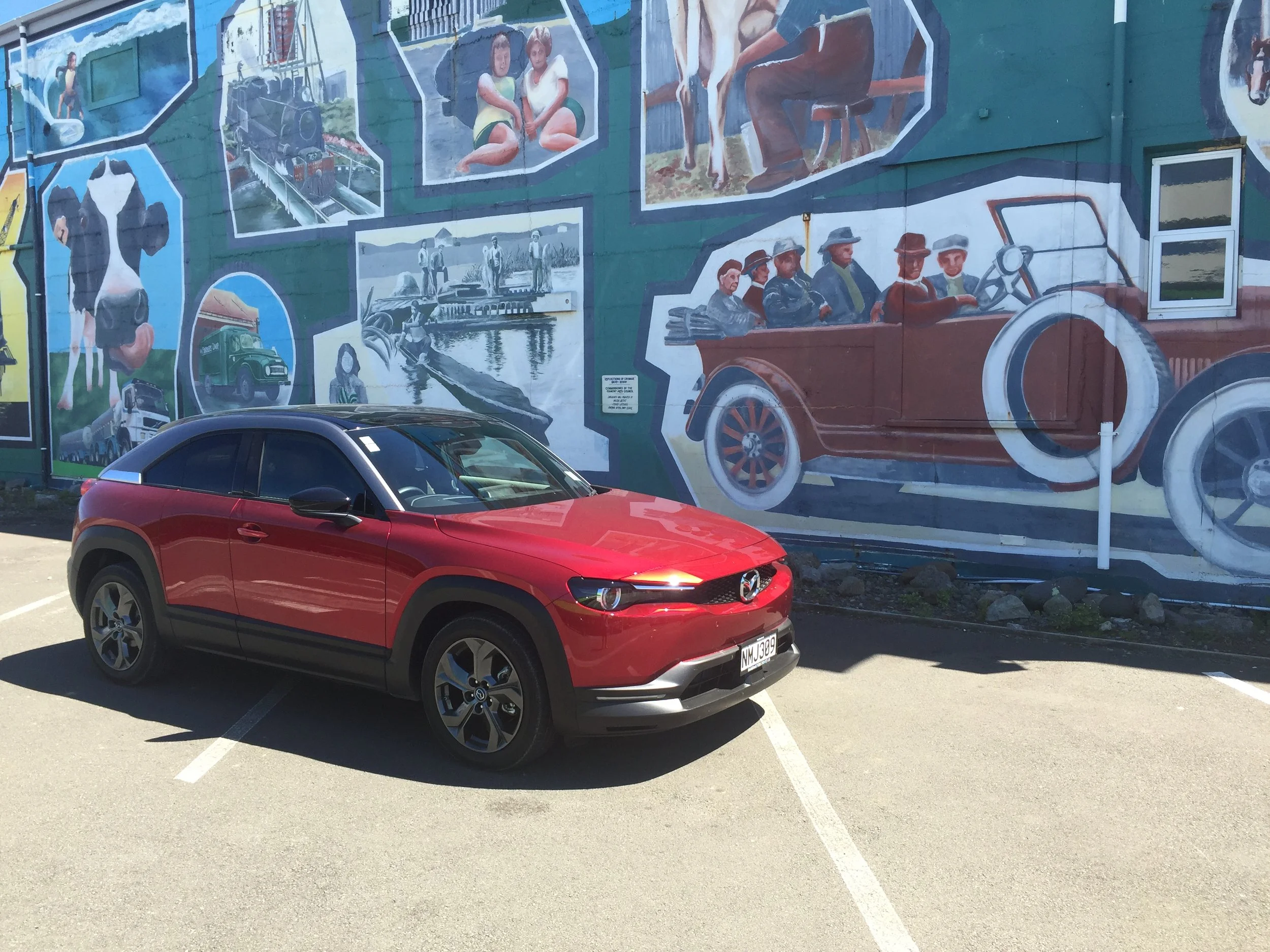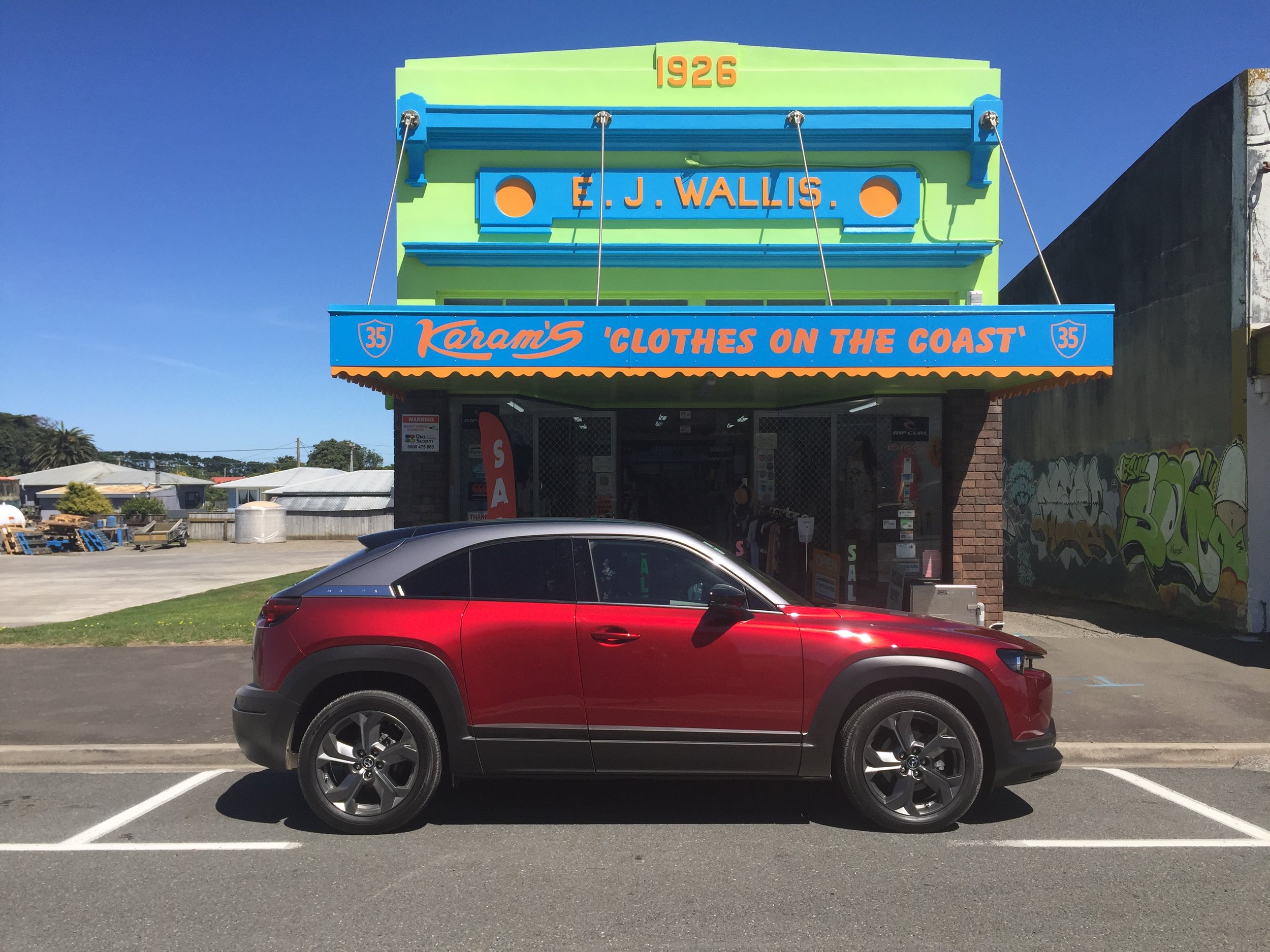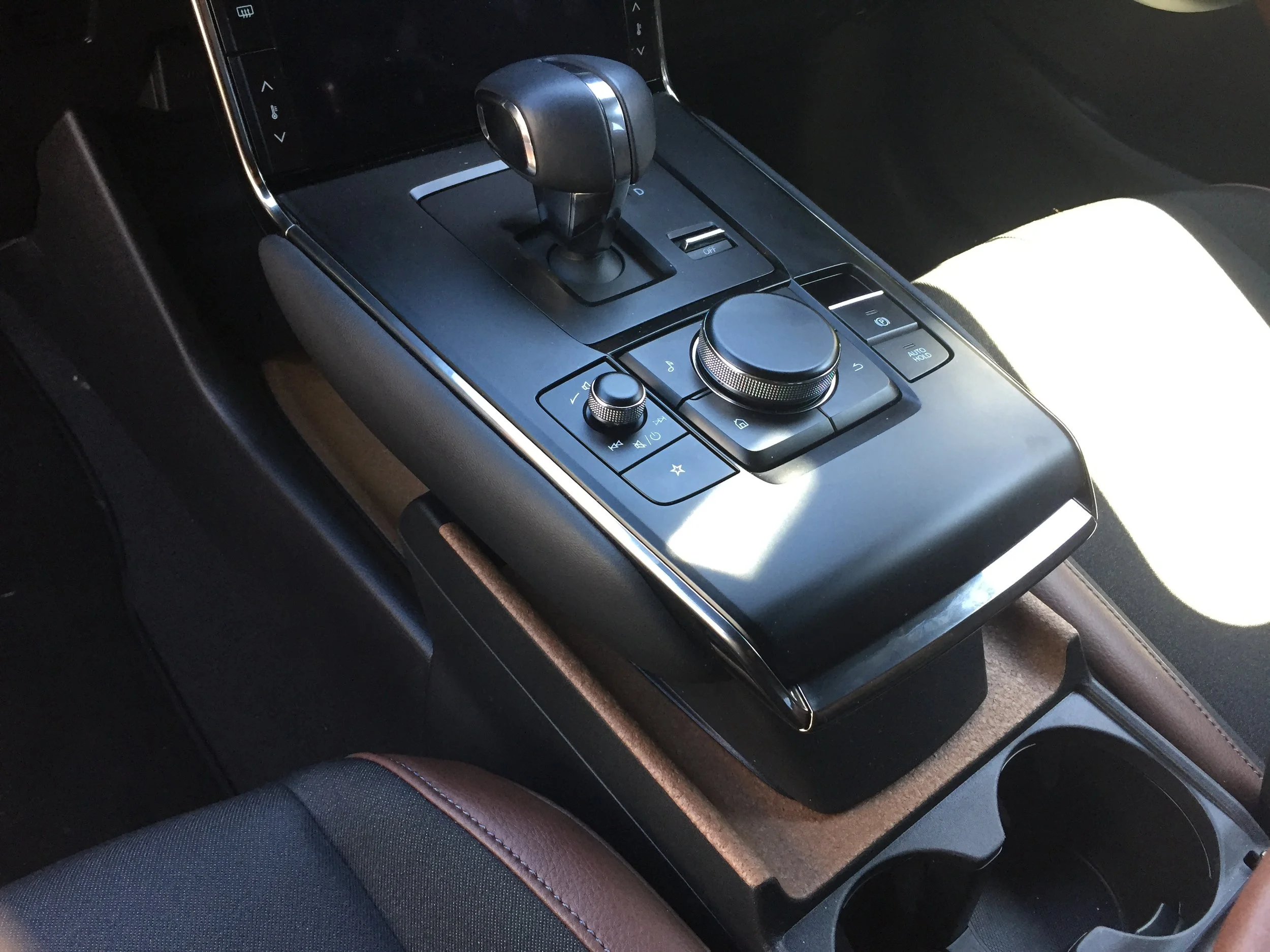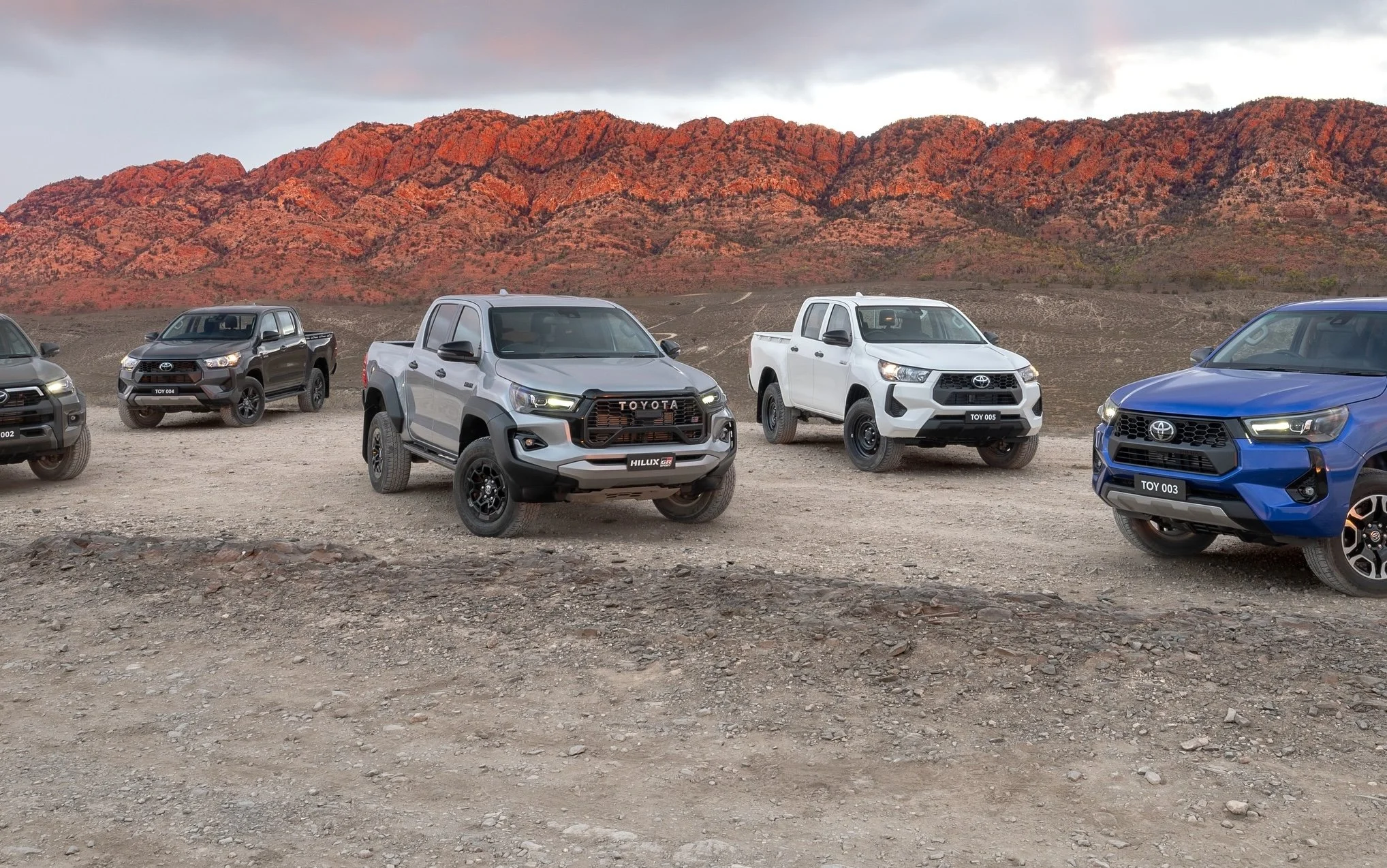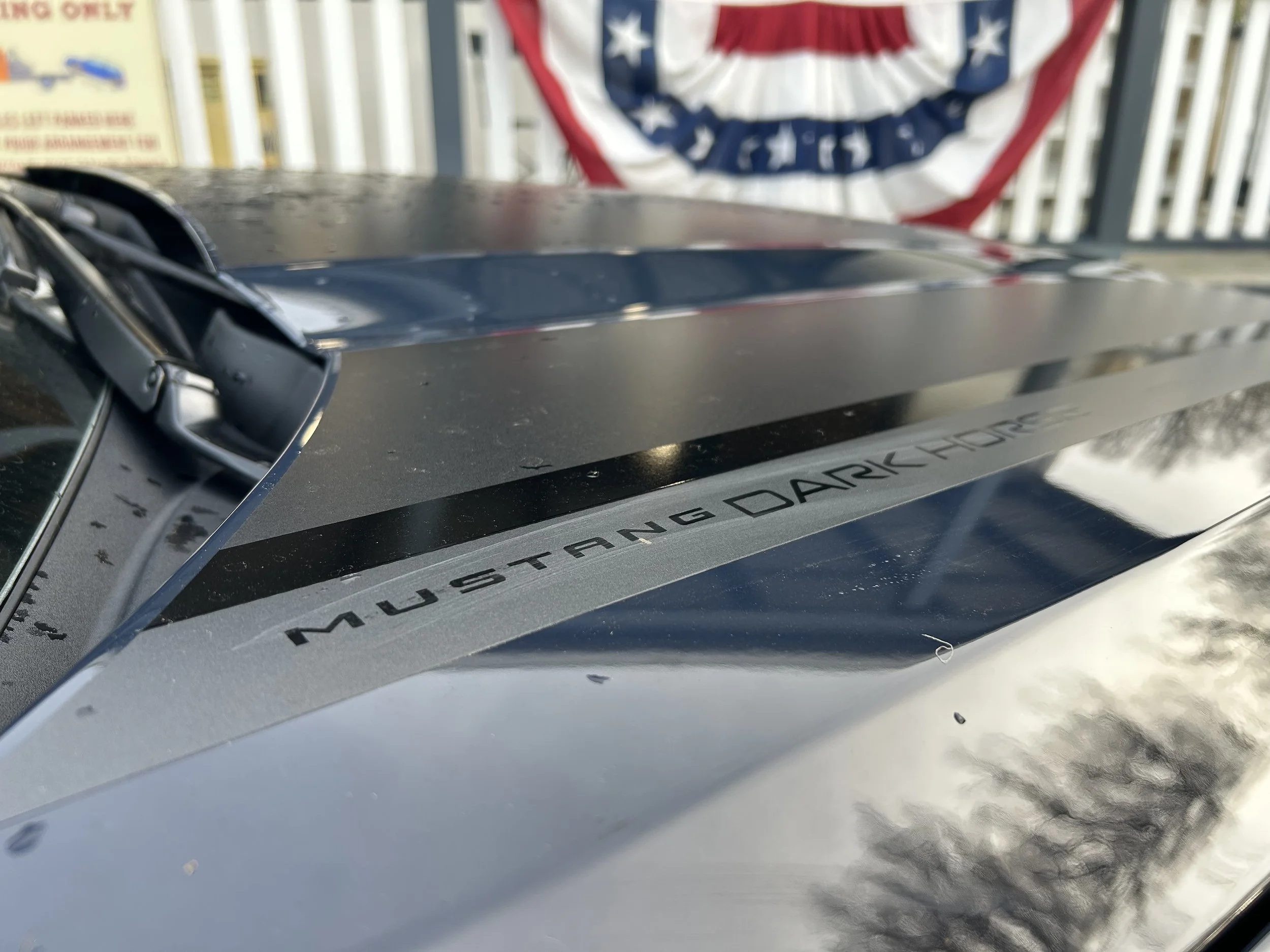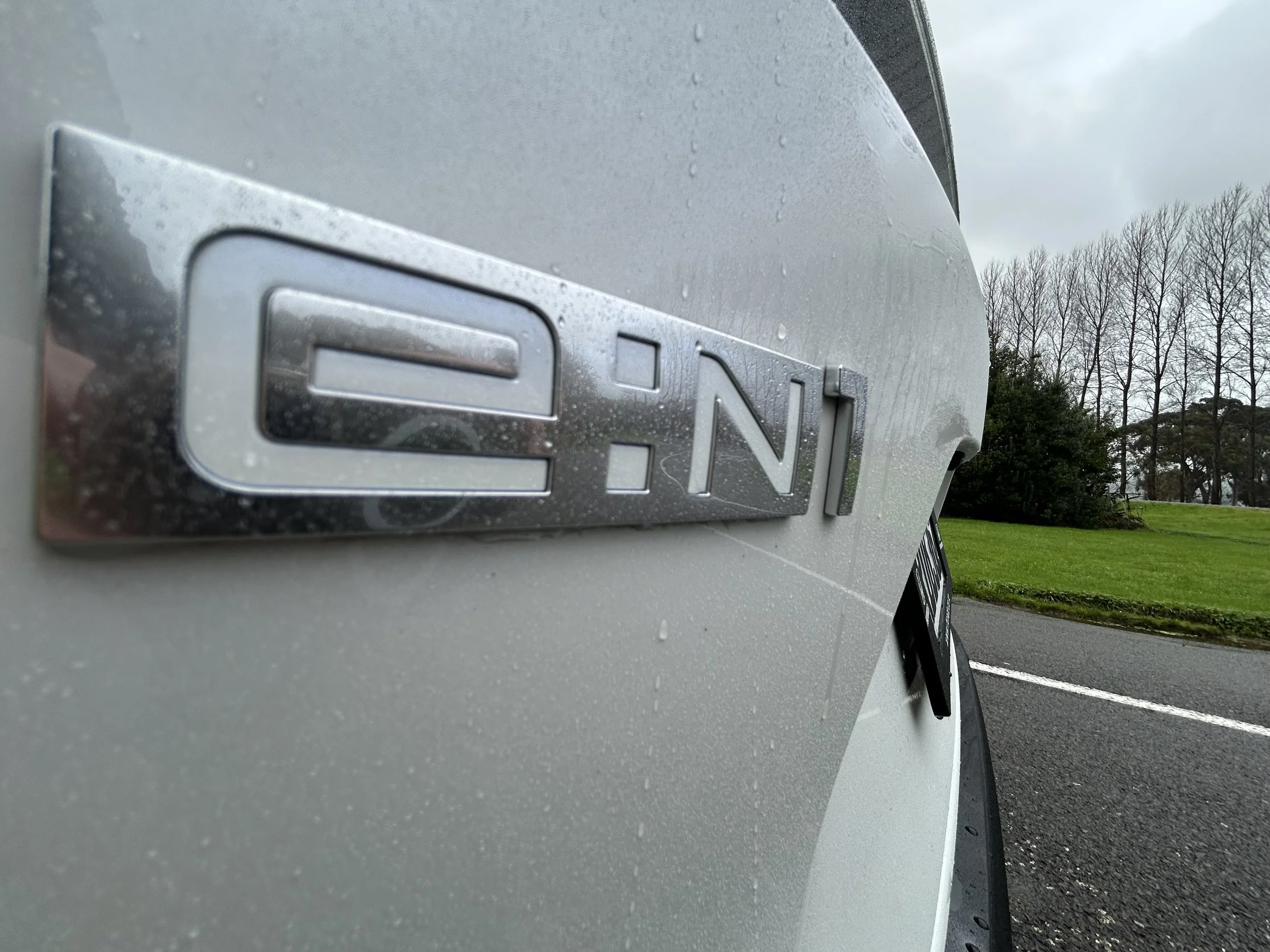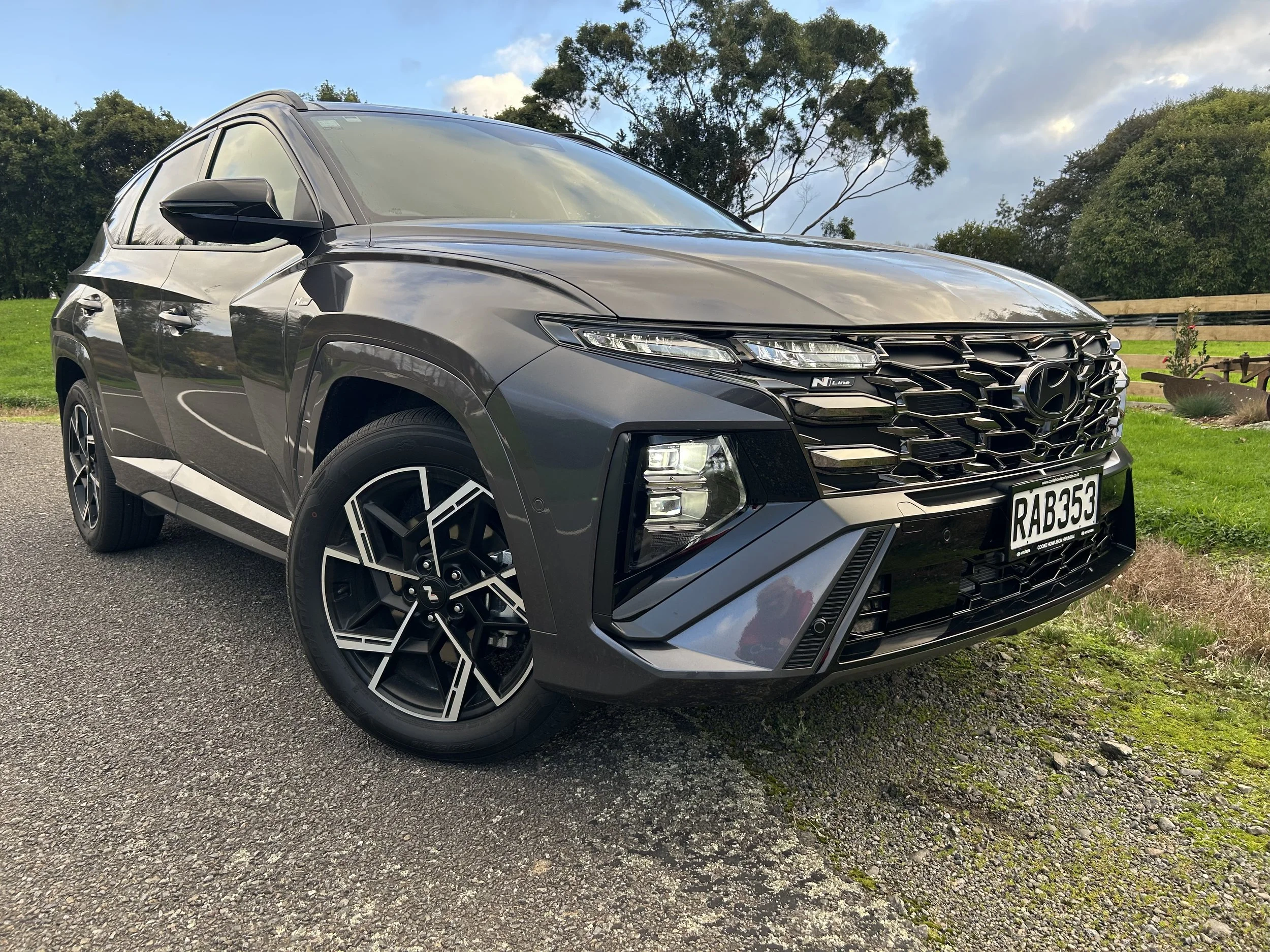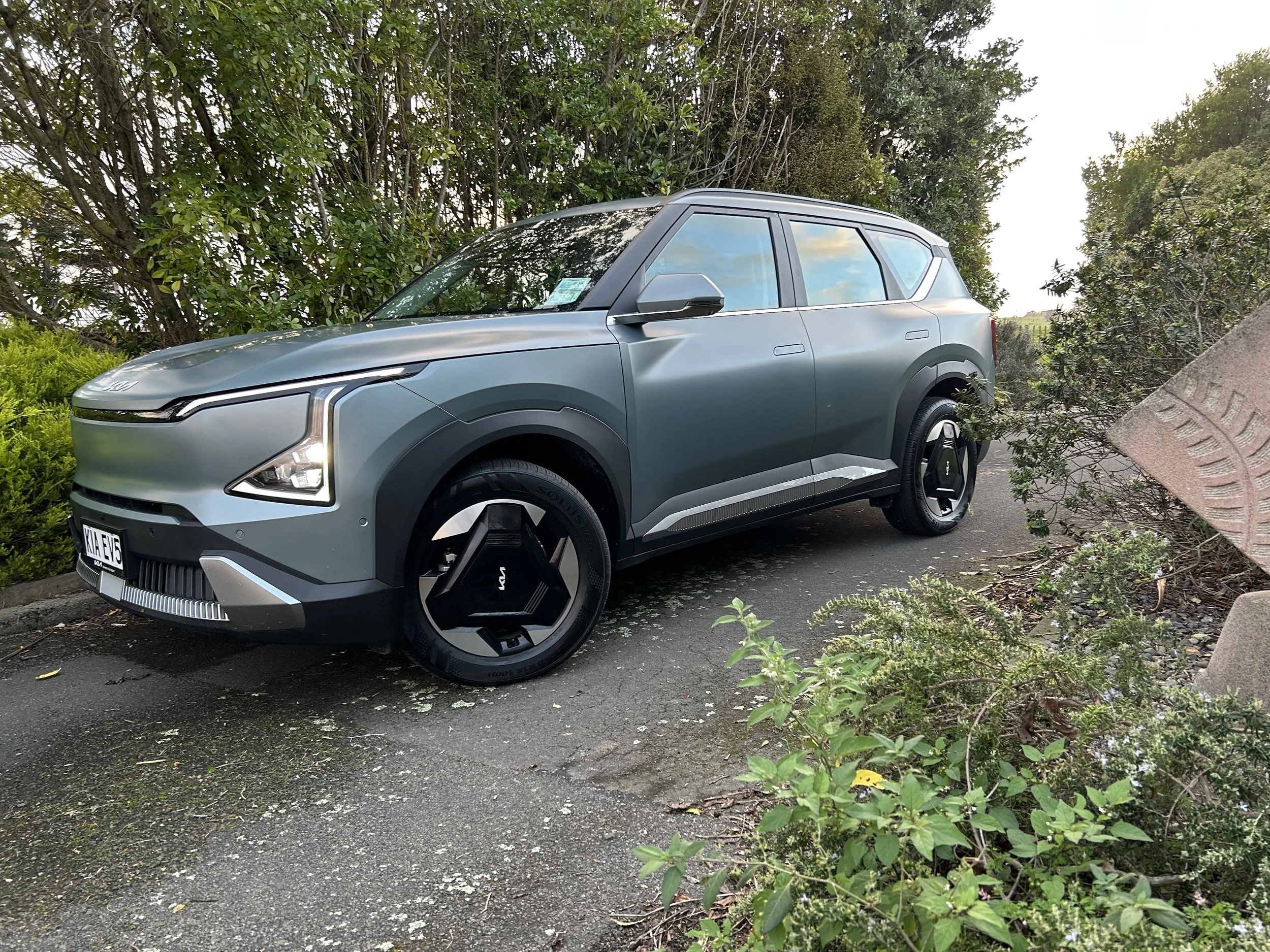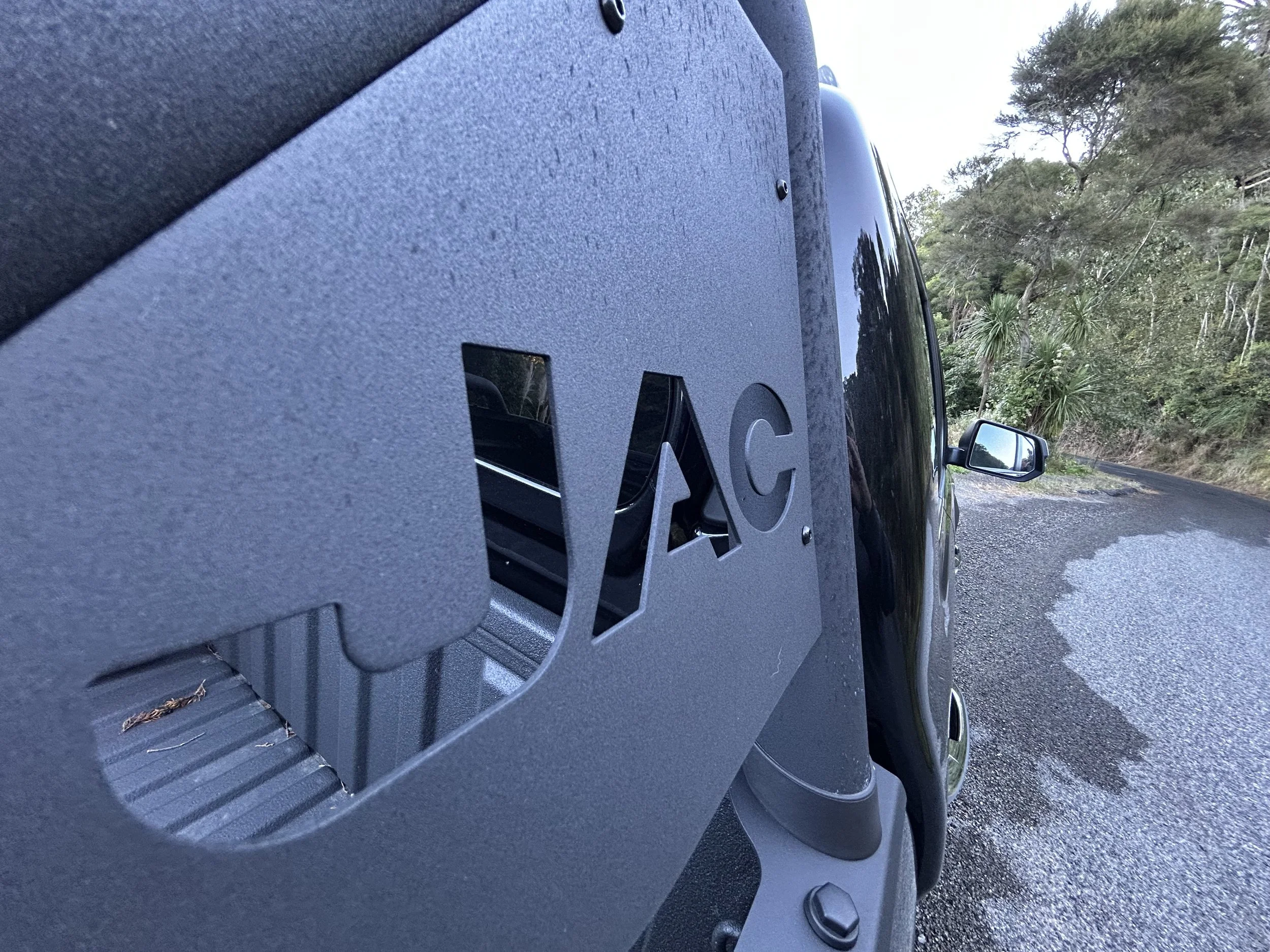Mazda MX-30 M-Hybrid road test review: Getting the picture
/Hiroshima’s mild hybrid system is a powerful pointer to the brand’s future, but this form presents modest change for good.
Price: $46,790
Powertrain: 2.0-litre four cylinder petrol engine with 24V mild hybrid system, 114kW, 200Nm, six-speed automatic.
Vital statistics: 4395mm long, 1545mm high, 1795mm wide, 2655mm wheelbase. Luggage space 341-1146 litres. 18-inch alloy wheels.
Like: Funkiest styling around, nice drive, pointer to the future.
Don’t like: Mild hybrid approach doesn’t achieve much, price reflects that.
OPUNAKE, population circa 1400, paints itself as a funky little drop-in along Taranaki’s Surf Highway 45.
There’s a nice surf beach, a colourful themed clothes shop, surprisingly good café culture … and murals. Loads of murals.
So much art dedicated to telling the local history adorns various buildings and structures that it is called the Opunake Mural Trail.
As I cruised through in a Mazda MX-30 M-Hybrid, my eye was caught by an illustration of six adults enjoying a day out aboard a big open-top 1920s’-style touring car.
That set me thinking. I wondered where they had been going? Everyone was pretty rugged-up, so they may have been heading off to nearby Mt Taranaki. Or maybe down to Opunake Beach. It can become rather windswept. Or maybe they were simply doing exactly what we were doing a century later. Going for a drive.
There would have been some major differences though. In the 1920s’ the average car’s fuel consumption was around 20-23 litres per 100km and the petrol received a generous addition of lead to keep octane ratings up and reduce engine knock.
You can be sure the emissions would have been toxic and the CO2 level very high.
With that as background, let’s look at the new-age MX-30. Its official fuel consumption under the worldwide 3P-WLTP test procedure is published at 7.1 L/100km and the fuel used is unleaded 91 octane.
Its CO2 exhaust emissions are 167 grams per kilometre. That puts it in the neutral ground in under the Clean Car scheme that affirms rebates for low-emitting vehicles and penalises any emitting more than 192 grams per kilometre.
So it could be said to be a clean(ish) car – acceptable on the one hand because its emissions are pretty good, but a bit worrisome on the other hand because it runs on a fossil fuel and doesn’t do anything outstandingly different in its intent to reduce emissions. Not like its sibling, the fully-electric version of the MX-30 which obviously doesn’t produce any emissions.
Mazda calls the vehicle a mild hybrid (hence the M-Hybrid badging). It uses a small integrated starter generator to capture energy that would normally be wasted during braking, store it in an equally small 24V lithium-ion battery, then use it to power various electrical systems that would ordinarily run off the engine.
That enables the engine to operate more efficiently, even to the extent of offering a bit more torque because none of its energy is being used to power such things air conditioning which, as any driver who has been involved in serious fuel economy exercises will know, are notorious for increasing fuel consumption.
Compared to fully hybridised vehicles currently on sale here such as various Toyotas, the amount of energy that is stored isn’t enough to allow the Mazda to run on electric power alone. This means therefore that the only reason the system is aboard this vehicle is to slightly improve fuel use and lower exhaust emissions.
That’s good, isn’t it? I suppose so - but it has to be said that the M-hybrid system doesn’t represent much more than a proverbial toe in the fuel economy water. Despite this however, at the same time it has to be regarded as an important initiative.
Mazda says it is committed to becoming carbon neutral by 2050 in all areas of its operations, and part of this strategy includes the Hiroshima brand having all new models either fully or partially electrified by 2030 while simultaneously continuing to perfect the internal combustion engine.
It forecasts that in eight years, 75 percent of Mazda cars will sport some form of electrified internal combustion engines, with the remaining 25 percent EVs.
In the MX-30’s case, its so-called electrified engine is the same e-SkyActiv-G unit that is aboard the mild hybrid and front-driven SP20 version of Mazda CX-30 small SUV. That vehicle is 32kg lighter than its MX-30 equivalent, and its published economy is accordingly slightly lower at 7.0 L/100km and 165 g/km.
The entry model in the CX-30 range, the front-driven GSX, also has the same engine but is not a mild hybrid. That vehicle is 22kg lighter again, but its consumption is higher at 7.2 L/100km and emissions are 169 g/km.
So it is obvious that at this stage Mazda’s mild hybrid system achieves mild results. And here’s an interesting point: the figures above are all official economy figures, established under formal World Harmonised Light Duty Vehicles Test Procedure (WLTP) conditions which is the test our Government uses to establish exhaust emissions for its feebate scheme.
In our case, although the MX-30 M-Hybrid’s official published fuel economy is the 7.1 L/100km, during our week driving around on coarse chip seal roads, we couldn’t get near that.
This prompted a decision to head off on a substantial drive towards the end of the week, which explains how we ended up cruising through Opunake, checking out its artwork.
But even then the average consumption didn’t drop much, certainly not to the 7.2 L/100km Richard Bosselman wrote that he achieved in this model.
Mind you, there were two of us and some heavy-ish luggage aboard, and the presence of Mt Taranaki in the middle of Taranaki region does mean on a longer journey vehicles can be subjected to periods of prolonged climbing as the roads gain altitude.
As a result, we achieved a best figure of 9.0 L/100km. And I suppose it has to be said that the difference between what Richard achieved and what I could get represents about $4-5 extra fuel cost per 100 kilometres, which is roughly the price of one cup of coffee at Opunake’s very good Sugar Juice Café.
But, if the whole intent of Mazda’s mild hybrid system is to lower fuel use and reduce exhaust emissions, then in this case it doesn’t achieve much. But importantly it’s a start. The MX-30 M-Hybrid uses one of Mazda’s least efficient petrol engines, and we have to believe the brand when it says there is plenty of improvement to be gained yet with the internal combustion engine.
And I have to say I loved the car itself. Just like funky Opunake, the MX-30 sports a funky design with all sorts of interesting features including an environmentally-friendly and recycle material-filled interior that includes cork, and so-called lifestyle doors that open incredibly wide – to the extent that once you get in the car, you have to lean way out again to grab the door to shut it.
Driving is pleasant, too. The MX-30 M-Hybrid operates as well as any other front-driven hatchback or SUV, with the SkyActiv engine offering a level of performance that belies the fact it has ‘only’ the 114kW of power and 200Nm of torque.
Overall, the model is appealing because it is distinctively different to anything else currently on New Zealand new vehicle market. It’s also a lot less expensive than the full EV version of the MX-30 which retails for $74,990. Even when the $8625 Clean Car discount is removed for the EV, it is still a lot pricier than the M-Hybrid.
So it’s a worthy addition to the Kiwi new car fleet. Just don’t expect the mild hybridisation of this car to achieve any great improvement in fuel economy.

